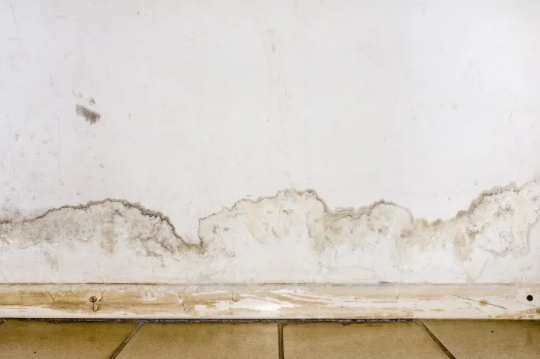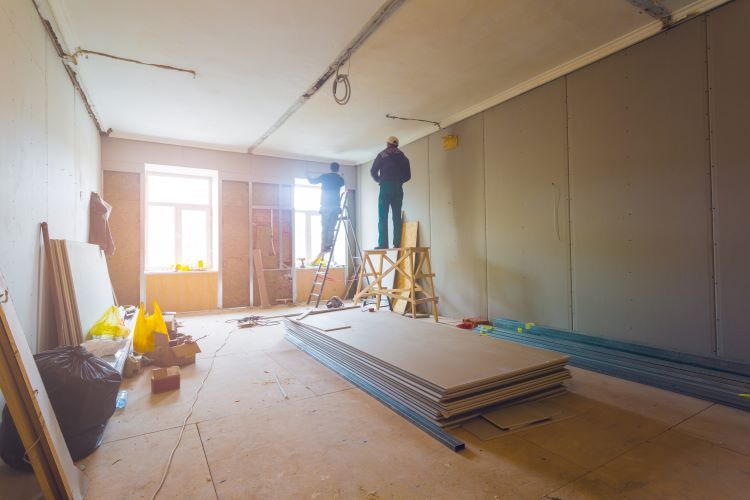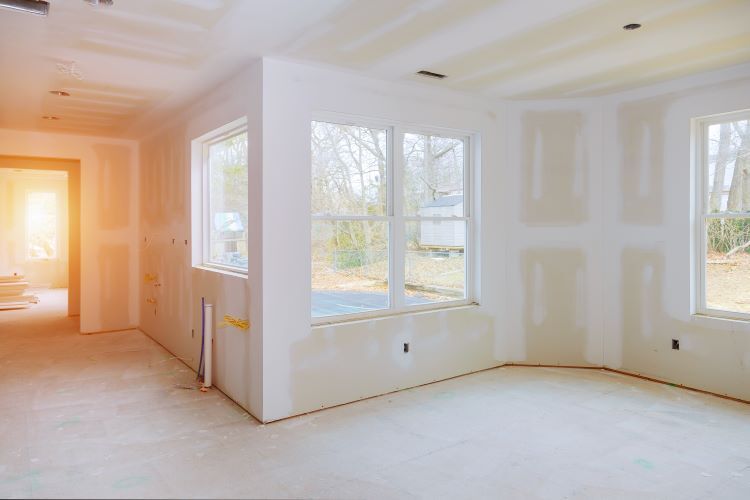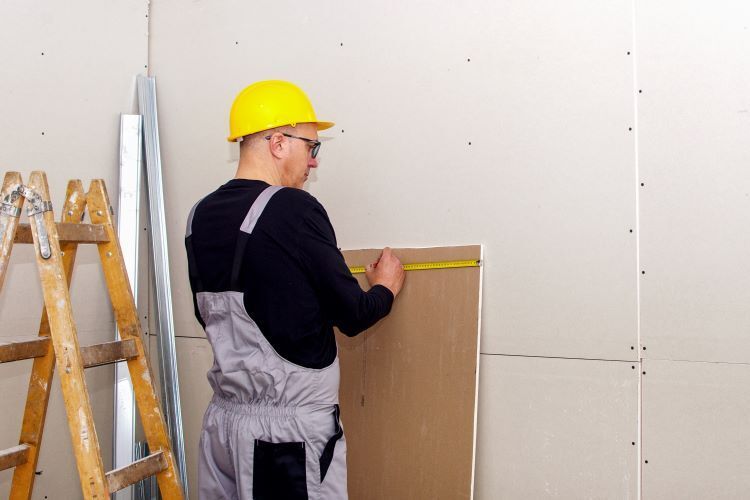Effective Ways To Identify Water Damage on Drywall

Water damage is a common issue that homeowners face, and it can lead to significant problems if not addressed promptly. At Saskatoon Drywallers, we understand the importance of identifying and addressing water damage on drywall to prevent further complications and maintain the integrity of your home. In this article, we’ll explore effective ways to identify water damage on drywall, so you can take the necessary steps to repair and protect your home.
1. Visual Inspection
Discoloration and Stains: One of the most obvious signs of water damage on drywall is discoloration. Look for stains or dark spots on your walls and ceilings. These stains often appear as yellow, brown, or rust-colored marks and can be indicative of water leaks or moisture problems.
Peeling Paint or Wallpaper: If you notice that paint or wallpaper is peeling, bubbling, or flaking off, it could be a sign of underlying water damage. Moisture trapped behind the surface can cause the paint or wallpaper to deteriorate and separate from the drywall.
Warping and Buckling: Water damage can cause drywall to warp or buckle. Check for any areas where the drywall has become uneven, swelled, or bulged. This can occur when moisture seeps into the drywall and causes it to lose its structural integrity.
2. Check for Mold Growth
Visible Mold: Mold growth is a common consequence of water damage. Inspect your drywall for any visible mold patches or mildew. Mold often appears as black, green, or white spots and can be found in areas with persistent moisture, such as around windows, doors, or leaky pipes.
Musty Odor: A musty or damp smell in your home can indicate hidden water damage and mold growth. If you notice an unpleasant odor, it’s worth investigating the drywall and surrounding areas for signs of moisture and mold.
3. Monitor Moisture Levels
Use a Moisture Meter: A moisture meter is a valuable tool for detecting hidden moisture in drywall. By using this device, you can measure the moisture content in the drywall and identify areas that may be at risk for water damage. Most moisture meters have a scale indicating the level of moisture, helping you determine the severity of the problem.
Check Humidity Levels: High humidity levels in your home can contribute to water damage and mold growth. Use a hygrometer to monitor indoor humidity levels and keep them within the recommended range (typically between 30% and 50%) to prevent moisture-related issues.
4. Inspect Surrounding Areas
Check Plumbing Fixtures: Inspect areas around plumbing fixtures, such as sinks, toilets, and water heaters, for signs of leaks or water damage. Leaking pipes or faulty plumbing can lead to water damage on adjacent drywall surfaces.
Examine Roof and Gutters: Water damage can also originate from roof leaks or clogged gutters. Check your roof and gutters for signs of damage or blockages that could be allowing water to seep into your home and affect the drywall.
Assess Exterior Walls: Exterior walls that are exposed to the elements may be more prone to water damage. Look for signs of water intrusion, such as damaged siding or gaps around windows and doors, that could be allowing moisture to reach the interior drywall.
5. Investigate Hidden Areas
Behind Fixtures and Appliances: Water damage may not always be visible on the surface. Inspect areas behind fixtures, appliances, and furniture where moisture could be accumulating and affecting the drywall. Use a flashlight to look for hidden signs of water damage.
Access Attics and Basements: Attics and basements are common areas for water damage due to their exposure to the elements and potential plumbing issues. Check these areas for signs of leaks, water stains, or mold growth on the drywall.
6. Professional Assessment
Consult a Professional: If you suspect water damage but are unsure of its extent or cause, consider consulting a professional. At Saskatoon Drywallers, we have the expertise and tools to assess the situation thoroughly, identify hidden damage, and recommend appropriate repair solutions.
Get a Comprehensive Inspection: A professional inspection can help identify the source of the water damage, assess the extent of the damage, and provide recommendations for repairs or remediation. This can save you time and prevent further damage to your home.
Conclusion
Identifying water damage on drywall is crucial for maintaining the health and integrity of your home. By performing regular visual inspections, checking for mold growth, monitoring moisture levels, and investigating surrounding areas, you can detect water damage early and take the necessary steps to address it.
If you need assistance with water damage repair or have concerns about your drywall, contact Saskatoon Drywallers. Our team of experts is here to help you protect your home and ensure that it remains safe and beautiful.
You might also like


